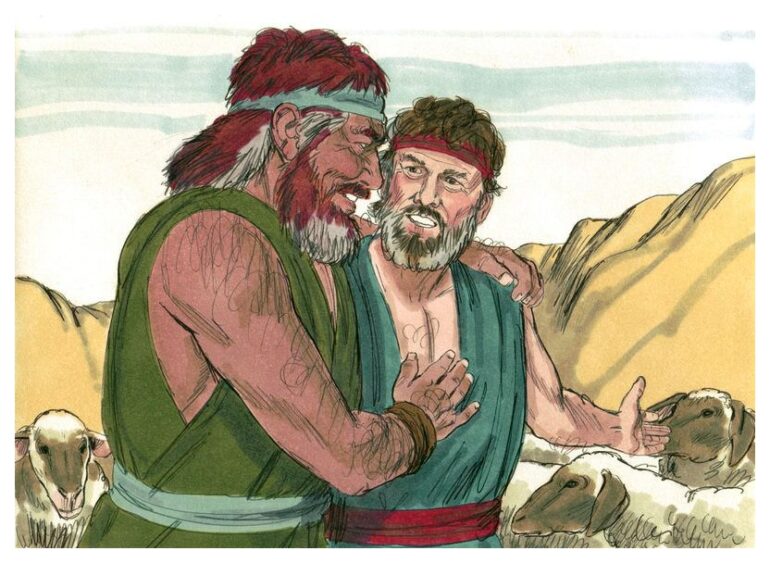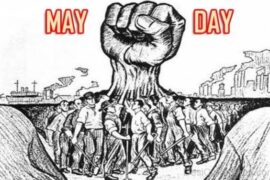“In the first year of King Belshazzar of Babylon, Daniel saw a dream and a vision of his mind in bed; afterward he wrote down the dream, beginning the account. Daniel related the following: ‘In my vision at night, I saw the four winds of heaven stirring up the great sea. Four mighty beasts different from each other emerged from the sea.’”
These verses, and their continued description of the four beasts, have been understood by our sages as an allegorical outline for Israel’s history in exile. According to Rashi, the first beast, “like a lion with eagle wings,” symbolizes the Babylonian Empire (Bavel) under Nebukhadnezzar, who destroyed Jerusalem’s first Temple (and under whose dominion Daniel lived).
The second, “like a bear,” symbolizes the successive rules of Persia (Paras) and Media (Madai), and under whose rule some of B’nai Yisrael returned to Judea roughly around the time of the Purim story.
The third, “like a leopard,” but with four wings and four heads, symbolizes the Greek Macedonian Empire established by Alexander (Yavan).
The fourth and final beast is described as “different from all the other beasts” and “fearsome, dreadful, and very powerful, with great iron teeth.” Its form is not likened to any known creature, and it is characterized by its ten horns. Rashi understands this last beast to be representative of the Roman Empire, especially under Vespasian, who as general and later as emperor, commanded the destruction of Jerusalem.
In order to understand Rome and its “fearsome, dreadful, and very powerful” nature in rabbinic thought, we must trace its ideological history from the perspective of Jewish historiography.
Throughout rabbinic literature, Rome and the Roman Empire are referred to as Edom, a kingdom originally attributed to Esav, the brother of our patriarch Ya’akov, in B’reishit 36:8. The lineage of Edom is interestingly full of a wide array of other Biblical nations, including Canaanites, Ishmaelites, Hivites, Hittites, Kenazites, and Horites.
Esav, along with his sons and chiefs, took wives from a wide array of neighboring peoples, and in some cases integrated these peoples into their own domains. This contrasts sharply to Israel’s patriarchs, who only married women from the family of Avraham, and even Yishma’el, who married women from his mother’s family in Egypt.
Edom distinguished itself early in its tendency towards integration rather than separation. In a world dominated by social, cultural, linguistic, ethnic, and religious boundaries, Esav and his descendants actively worked to mitigate and erase these boundaries for their own gain. Furthermore, Esav was blessed with military might when Yitzḥak declared he would “live by his sword” and one day throw off the yoke of his brother’s rule.
Finally, Esav was given a birthright in Mount Seir, what would become the heart of Edomite territory, where he established himself outside the land of his original birthright.
The historic records throughout the Tanakh mention wars between the Hebrew kingdoms and Edom, most notably David’s conquest of the area, with the Edomites eventually moving into southern Judea (what came to be called Idumea) after the destruction of Edomite Seir during Babylonian rule as prophesied in Yeḥezkel 35. It is in this context, during the second Temple period that the association between Rome and Edom developed.
The conquest of Idumea-Edom by the Hasmonean King Yoḥanan Hyrkanus and the forced naturalization of its people into Israel (performed by enslaving and then freeing them) greatly impacted the trajectory of Judea’s history.
Antipas and his son Antipater, Judeans of Edomite origin, served as loyal governors under Hasmonean rule, but Antipater’s son Herod revolted, assisted by the forces of the Roman Empire. He assassinated the last Hasmonean king and established himself as a client king subservient to the Roman senate.
As in the case of Esav and his followers, the Edomite Herod and his Roman benefactor Marc Antony erased social boundaries for political and economic gain while expanding their rule.
This association of Edom with Rome, and the ensuing Roman destruction of Judea has marked Edom-Rome in the Jewish people’s collective consciousness as the antithetical force to Israel and major obstacle to Hebrew liberation. Where previously, Bavel, Paras-Madai, and Yavan had respectively defeated, occupied, and undermined our sovereignty in Israel, as prophesied by Daniel, Edom-Rome has played these roles in our story for the past 2,000 years.
Although the Roman Empire dissolved many centuries ago, the assimilationist agenda it championed remains strong in Western (Euro-American) civilization. As Rome adopted the religion of a heretical Jewish sect that came to be known as Christianity, they corrupted its underlying Hebrew teachings to conform to the Edomite worldview, revising the new religion further as additional peoples and cultures were absorbed.
Through this new vehicle, even as imperial power crumbled, Edomite values continued to be maintained and spread through the Church, which became the single most powerful social force in Europe for over a millennium.
Not until the seventeenth century did Christianity face any serious challenges to its authority. Until then, it had effectively served as the unifying power behind diverse populations throughout Europe, while maintaining a special enmity towards the dispersed Jewish people, as laid out in Augustine’s doctrine of Jewish Witness (fifth century). In the Edomite tradition, Christian-European Church fathers, nobles, and monarchs alternated between postures of destruction, accommodation, and conversion to their subject Jews. It was largely the dispersion of Jews across Europe and the resilience of our traditions and Torah that maintained us as a distinct people over the centuries of exile.
But while the Church’s power was eventually challenged by the European Enlightenment, this was less a challenge to the identity and power of Edom than a transformation into something new.
For many eighteenth century Jews, Europe’s Enlightenment was viewed as the “emancipation” from both discriminatory laws and distinct Jewish identities. Christian Wilhelm Von Dohm, one of the primary German advocates for the emancipation of Jews, wrote that governments should “care for the moral education and enlightenment of the Jews” to make Jews more easily governable, and that Jewish schools should be reorganized to mirror Christian schools in the ways that they prepare their students for civic life in a European society.
Just as the Romans saw Herod, a Jewish Edomite, as a channel for reorganizing Judean political life to suit Roman interests, leading thinkers in Christian Europe – the inheritors of Roman-Edomite values – saw nominally Jewish schools with a Christian structure as a means of socializing their Jews to European society.
The “fearsome, dreadful, and very powerful” threat of Edom throughout our history, while most visibly marked by the destruction of Jerusalem, goes deeper. As Daniel saw, the threat of Rome is unique, going beyond the physical destruction wrought by the Babylonians, the temptation of remaining in exile offered by the Persians, and the pressure to assimilate pushed by the Hellenistic Seleucid Greeks.
Mirroring the strengths of Esav, Rome-Edom broke precedent in erecting all three of these obstacles to Jewish liberation. The Romans “lived by their sword” in their military might and destroyed Jerusalem. They dispersed and persecuted the Jewish refugees in exile until eventually offering them material comforts, an illusion of acceptance, and a false sense of security in order to quell their desires to return home, just as Esav was offered Seir as appeasement for his lost birthright.
The price of Jewish comfort, acceptance, and security in Western civilization is Edom’s repeated demand to eliminate Hebrew distinctiveness in favor of assimilation, just as Esav and his followers assimilated numerous other peoples into their identity. In order to overcome the power of Edom and truly liberate ourselves, we must recognize each of these components and seek not only to repatriate ourselves to our homeland, but also to decolonize our identity and undo our psychological assimilation into the Edomite worldview.






please i need the details of edom people.